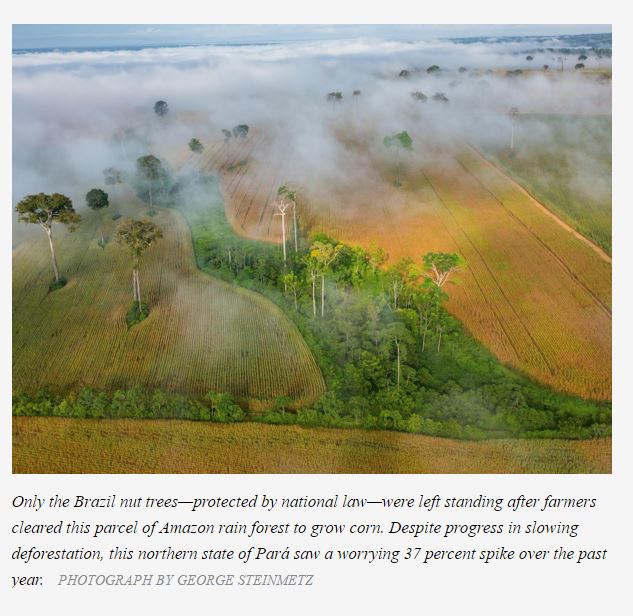Whether you like it or not, I think GMO labeling is coming to food near you. It is all because of Vermont. They passed a bill that will require GMO labeling starting in July. If you are a food manufacturer the logistics of providing a GMO label is about to become very complicated. The easiest solution for many food manufactures is just to label all their products with GMO labels whether a state requires it or not. If they don't then they will have to be careful how they distribute food from state to state.
You can argue that consumers should have the transparency of what is in their food. So are there reasons not to label GMO products? I think the answer is yes on multiple fronts.
Food Manufacturers stand behind the safety of their products.
Press releases have started to surface showing that is the stance food manufacturers are already taking including ConAgra Foods, General Mills, Kellogg's and Mars. They will label all GM products and the business decision is sound. If they only label in one state then they will have to increase costs to consumers and they don't want to do this yet. They are being forced in a corner, but I am happy to see they all still stand firmly behind the science. They all believe in biotechnology and GM food. They know it is safe. Take a look.
 |
| http://www.mars.com/global/press-center/gmo.aspx |
Labels imply different
A GMO label on a product implies that is a GM food is fundamentally different from its non-GMO counterpart. And let's be honest, that difference is an implied danger. Do you notice a trend in the food manufacturer press releases: "we stand behind the safety," and "GMOs are not a health or safety concern". The GMO labeling hype is because people think GMOs are unsafe and want to see how to avoid them. A GMO crop was indeed engineered with one or maybe even 5 genes. The DNA that encodes that gene is precisely sequenced and known down to every base pair. That sequence is run against allergen databases. It is tested for years in all kinds of studies. The results of those few genes are tested and then tested more for safety. When you conventionally breed crops to introduce a new cultivar you are changing and introducing hundreds of new genes. But corn (or insert any crop) is corn right?. Take a look at what conventional breeding did with corn and think about the thousands of genes needed to make that change. There are NO labels when food from a brand new cultivar is released in the grocery store from conventional breeding.
 |
| http://voices.nationalgeographic.com/2009/03/23/corn_domesticated_8700_years_ago/ |
The sad thing is the GMO labeling issue at the federal level was heading in the right direction in my opinion. The bill H.R. 1599 Safe and Accurate Food Labeling Act had passed the House, but is stalled in the Senate. This bill states (
https://www.congress.gov/bill/114th-congress/house-bill/1599):
Subtitle A--Food and Drug Administration
(Sec. 101) This bill amends the Federal Food, Drug, and Cosmetic Act to require the Food and Drug Administration (FDA) to continue the voluntary consultation process established under the FDA’s "Statement of Policy: Foods Derived from New Plant Varieties." In that process, the FDA evaluates a scientific and regulatory assessment provided by the developer of a food produced from, containing, or consisting of a plant that is a genetically engineered organism (GMO).
The FDA may require a GMO food to have a label that informs consumers of a material difference between the GMO food and a comparable food if the disclosure is necessary to protect public health and safety or to prevent the label from being false or misleading. The use of a GMO does not, by itself, constitute a material difference.
The bill states it exactly right: "The use of a GMO does not, but itself, constitute a material difference," anymore than a new plant variety. However, the Vermont bill will imply there is a difference.
Consumers are going to be even more confused
Consumers are emotional and can change opinions from reading one false Tweet or Facebook post. When it comes to GMOs, I think many consumers are confused. This isn't a jab at consumers. I think there is a "fog of war" when new technologies come out. It takes a while for consumers to learn about the product and for it to find acceptance, but this particular labeling in Vermont is not going to help this cause. A survey I found from 2014 shows some US public perception. Take a look http://www.pewinternet.org/2015/07/01/chapter-6-public-opinion-about-food/
If we dive into the survey we see that 67% of US adults generally think GMOs are unsafe.
The second graph shows what happens to that view as education level goes up. As education level goes up, safety concerns by US adults goes down. This tells me that the biggest problem we have with GMOs is education. We need to get the science out to the consumer. A GMO label does not educate but sows more confusion especially when every state is trying to introduce its own individual labeling law.
In ending I could not sum it better than a farmer in Iowa. Read the opinion in full, but here is great synopsis:
"Consumer confusion
This is a recipe for bewilderment among consumers.
Moreover, these laws are bad on the merits. GMO foods are safe and healthy. They don’t need warning labels, as organizations ranging from the American Medical Association (AMA) to the National Academy of Sciences (NAS) have said.
I don’t know about you, but I’d rather entrust my food labels to the experts who work at the FDA and listen to the advice of the AMA and the NAS — and not to a few politicians in Vermont.
Labels should educate, conveying reliable information rather than propaganda. We must honor their basic purpose, not let them become marketing devices for favored groups."
Full post found at:
https://www.iowafarmbureau.com/Article/Mandatory-GMO-labeling-is-a-recipe-for-consumer-confusion















